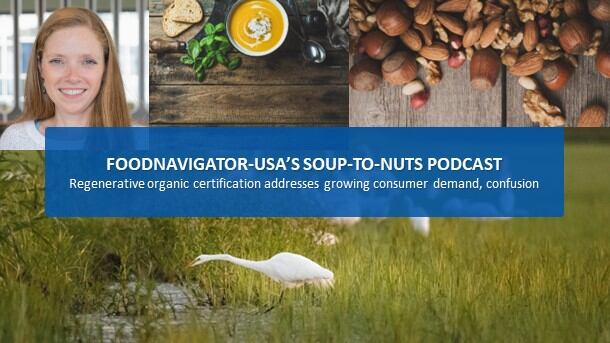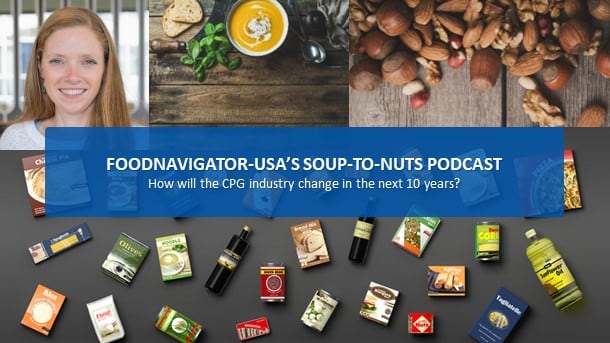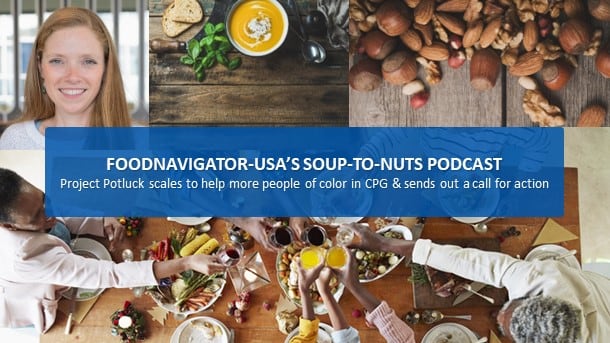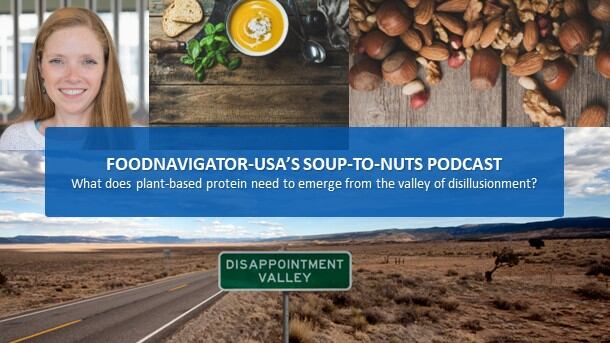Beginning with the Regenerative Organic Alliance certification of its white basmati rice, the company’s ambitious goal not only gives the Lundberg Family Farms credit for the earth-healing practices it says it has followed for decades, but also offers another touchpoint for consumers whose awareness about and demand for regenerative agriculture is growing quickly.
According to the Hartman Group’s Organic & Natural 2022 report, 57% of consumers now are aware of regenerative agriculture – up 10 percentage points from 2019, and even though the group’s research shows they are “less aware of the detailed practices involved with regenerative agriculture, consumers tend to view the term in a positive light, and see it as an agricultural method that goes beyond current organic standards … and as a proactive approach to restoring and rebuilding the soil.”
In this episode of FoodNavigtaor-USA’s Soup-To-Nuts Podcast, third-generation farmer and Lundberg’s vice president of agriculture Bryce Lundberg and the company’s chief growth officer Suzanne Senglemann share why regenerative organic certification is important, how it goes beyond other standards, such as organic, and how they chose the Regenerative Organic Alliance as their certifier. They also share strategies for educating consumers and where they see the regenerative organic agriculture going.
[Editor’s note: Never miss an episode of FoodNavigator-USA’s Soup-To-Nuts podcast – subscribe today.]
Regenerative organic vs organic certification
Lundberg Family Farm’s decision to become regenerative organic certified on top of its many other certifications, including USDA Organic, Non-GMO Project Verified, Certified Organic by CCOF and several others was to provide additional education about the different layers of sustainable and organic practices.
Lundberg also noted that the certification speaks directly to the company’s founding principles and reinforces its commitment to continual improvement.
“My grandparents came to California in the ’30s. They went through the dust bowl, they went through the Depression and they saw what poor farming practices did to the land. When they came to California, they had a commitment to … leave the land better than we found it, and … a commitment to farming in partnership with nature. I think that is the goal of regenerative agriculture,” Lundberg told FoodNavigator-USA.
He added that the company wanted to be recognized and be held accountable as a leader in regenerative farming practices, but that regenerative is only part of the equation – the other part is organic.
“In the ’70s, we helped develop standards for organic farming in California, and as the nation embraced organic farming, we helped lead an effort to nationalized a standard. And it is a good standard,” but “we believe that strong, excellent organic farming practices are regenerative. And, so we’re taking that idea and wanting to put it into practice,” he said.
“This is an opportunity to let consumers know that there are layers of organic practices, and the USDA organic [standard] is good, but it doesn’t cover many things that consumer want to know about,” including soil health, animal welfare and worker welfare to the extent that consumers want, he added. Bu organic regenerative agriculture does.
How to select a regenerative agriculture certifier
As interest in regenerative agriculture grows, several certifying bodies have emerged with different standards, expectations and approaches for ongoing improvement. Lundberg and Senglemann explain that Lundberg Family Farms teamed with the Regenerative Organic Alliance because their standards aligned with company’s goals and it was recommended by Whole Foods.
Lundberg said he was impressed with the Regenerative Organic Alliance because it is made of farming experts and understands that different farms have different needs and capabilities, so they created a standard that is ridged enough to command adherence and improvement but flexible enough to be tailored to different farming conditions and climates.
Senglemann added Whole Foods endorsed the Regenerative Organic Alliance, and Lundberg Family Farms trusts the retailer to put consumers first and protect against greenwashing.
When selecting a certifier, Senglemann also advises companies to consider whether the certification is based on outcome or farming practices and how that aligns with their goals and current position.
She also advised firms to consider how the certifying body can help the company advance and expand its commitments overtime as appropriate. She explained that Regenerative Organic Alliance has a path for certifying single-ingredient products, like Lundberg’s rice, and also offers a stair-step approach for certifying more complicated, value-added products, like the rice-based Lundberg offers.
Clarifying regenerative agriculture for consumers
Even though regenerative agriculture practices go back to the beginning of farming, the term is still relatively new to most consumers and still undefined, which Senglemann cautions can lead to consumer confusion and distrust unless steps, like certification, are taken early to protect against greenwashing
She explained that Lundberg is leveraging its new regenerative organic certification as a teaching tool for consumers by including not just the certification on its packaging but by going the extra step to include under the badge three icons and language that reflect the best of the regenerative movement: soil health, animal welfare and worker and community welfare.
In addition, the company includes an infographic on the back of its package that talks about soil health, wildlife support, water usage and other values in a way consumers can understand.
Next steps for a growing movement
While it is still early days for defining regenerative agriculture and educating consumers and other industry stakeholders about its value, Lundberg and Senglemann are optimistic about its potential for improving the food and agriculture system, and are eager to help push the concept into the larger collective consciousness.
To that end, Lundberg Family Farms will be talking about regenerative agriculture and its farming practices at Natural Products Expo West this week, where it also will be showcasing “a small rice farm” with a selection of the rice plants it grows on its farm at its booth #1831.




